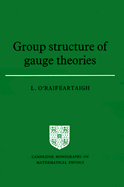Book contents
10 - Grand unification
Published online by Cambridge University Press: 04 April 2011
Summary
Introduction
The S(U(3) × U(2)) gauge theory of the non-gravitational interactions is not fully unified, in the sense that it contains three independent gauge couplings, and that the leptons and quarks, and more generally the different generations, belong to independent representations, and this suggests that S(U(3) × U(2)) is only a subgroup of some larger, preferably simple, gauge group G. Gauge theories based on such larger groups G, which unify the SU(3), SU(2) and U(1) subgroups of S(U(3) × U(2)) are called grand unified theories, or GUTs. Such theories were first considered by Pati and Salam (1973) and Georgi and Glashow (1974) and will be the subject of this chapter. The novel feature of GUTs is that they involve proton decay.
Renormalization group preliminary
Before GUTs can even be considered, there is an important question that must be answered, namely, how can there be a single overall gauge coupling constant in a single group G when the present values of the three coupling constants in S(U(3) × U(2)) differ by so much – certainly more than could be reasonably accounted for by group factors such as Clebsch–Gordan (CG) coefficients.
As first discussed by Georgi, Quinn and Weinberg (1974) the answer to this question lies in the renormalization group equations of section 7.5.
- Type
- Chapter
- Information
- Group Structure of Gauge Theories , pp. 110 - 127Publisher: Cambridge University PressPrint publication year: 1986



